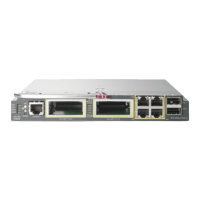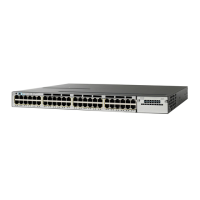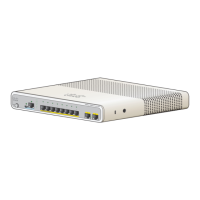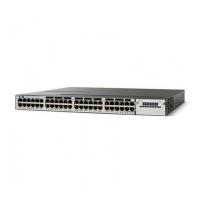•
AutoQos-4.0-Output-Multimedia-Strm-Queue (match-any)
The following policy maps and class maps are created and applied when running the auto qos voip cisco-phone
command:
Policy maps:
•
service-policy input AutoQos-4.0-CiscoPhone-Input-Policy
•
service-policy output AutoQos-4.0-Output-Policy
Class maps:
•
class AutoQos-4.0-Voip-Data-CiscoPhone-Class
•
class AutoQos-4.0-Voip-Signal-CiscoPhone-Class
•
class AutoQos-4.0-Default-Class
To disable auto-QoS on a port, use the no auto qos voip interface configuration command. Only the
auto-QoS-generated interface configuration commands for this port are removed. If this is the last port on
which auto-QoS is enabled and you enter the no auto qos voip command, auto-QoS is considered disabled
even though the auto-QoS-generated global configuration commands remain (to avoid disrupting traffic on
other ports affected by the global configuration).
The device configures egress queues on the port according to the settings in this table.
Table 34: Auto-QoS Configuration for the Egress Queues
Queue (Buffer)
Size for 10/100
Ethernet Ports
Queue (Buffer)
Size for
Gigabit-Capable
Ports
Queue Weight
(Bandwidth)
CoS-to-Queue
Map
Queue NumberEgress Queue
15 percent25 percentUp to 100
percent
4, 51Priority (shaped)
25 percent25 percent10 percent2, 3, 6, 72SRR shared
40 percent25 percent60 percent03SRR shared
20 percent25 percent20 percent14SRR shared
Examples
The following is an example of the auto qos voip trust command and the applied policies and class maps:
Device(config)# interface gigabitEthernet1/0/31
Device(config-if)# auto qos voip trust
Device(config-if)# end
Device# show policy-map interface GigabitEthernet1/0/31
GigabitEthernet1/0/31
Service-policy input: AutoQos-4.0-Trust-Cos-Input-Policy
Class-map: class-default (match-any)
0 packets
Command Reference, Cisco IOS XE Everest 16.5.1a (Catalyst 3650 Switches)
628
auto qos voip
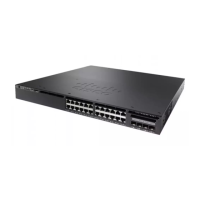
